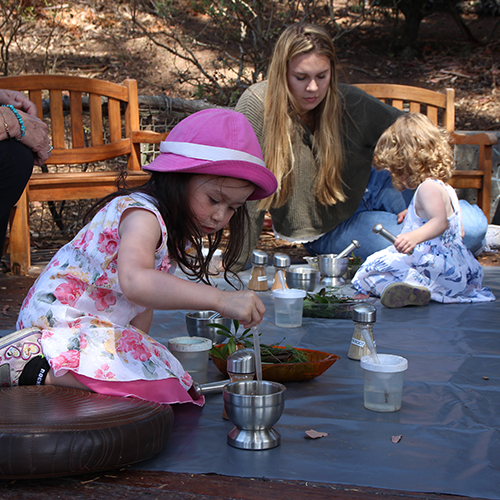Children create exciting mash ups using found natural materials.
Materials Required
- Mortar and Pestle, or sticks with small paper cups
- Gathered natural materials (e.g. flowers, herbs, leaves, bark)
- Water
- Pipettes
- Small cups for water
- Bowls
- Tarp or towels
- Baskets
Instructions
- Gather natural materials, fill cups with water, and arrange all materials neatly.
- Model using a mortar and pestle for the children.
- Give children a chance to gather additional natural materials in their baskets that they can add to their own mash ups.
- Invite children to make a mash up using the natural materials and water. Ask children to use multiple senses as they begin to create, for example, have them touch, smell, and describe the leaf before grinding it. How is it different or the same after grinding?
- Invite children to compare and contrast the various plants they find. Ask questions like, “What is the same about them?” “Does this flower feel like the other flower?” “Which one is softer?”
- Encourage pretend play with the mash ups by asking questions like, “What does your mash up do?” “What would happen to me if I took your mash up and my mash up?”
Additional Tips
- If mortars and pestles are not available, a cheaper alternative is to use paper cups with sticks.
- To extend this activity, try boiling some of the mash ups and notice any changes.
- Check for allergies before engaging in this activity.


